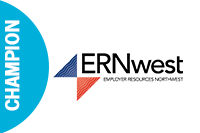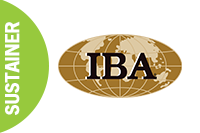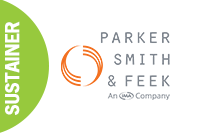By Angi Shamblin, Associated Industries
How does one go about creating a culture that discourages harassment and discrimination and encourages respectful, positive work relationships?
As with any relationship, the key is communication. Your employees need to hear from you to understand what behavior is permitted and what is not.
Often, the best place to begin is to discuss what it is to be respectful.
[expander_maker id=”1″ more=”Read more” less=”Read less”]
Respect is at the very heart of positive relationships. When we poll people in different companies as to their definition of respect, we often hear about the “Golden Rule” or “do unto others as we would have done to us” or simply, “treat people the way you would want to be treated.” The problem with this definition of respect is that it uses one’s personal belief system to determine how to treat others. This can be dangerous as we make assumptions about how someone else might feel.
Instead, we recommend that employers spend time talking about what we call “the Golden Rule Plus,” which says that we need to treat people the way they want to be treated. It means building a culture of awareness and empathy.
This mind shift impacts every aspect of communication in an organization, both verbal and nonverbal. If we are truly interested in understanding how to show respect to others, it means we take the time to get to know them. It means we are mindful of how our words or actions (or inactions) might be perceived.
Whether it’s saying hello to a coworker when you arrive in the morning (even though you’re not a morning person and don’t feel all that friendly first thing in the morning) or knowing when a friendly hug would be appreciated versus unwelcome. Treating people as individuals is the key to developing a culture of respect.
Of course, while we want to treat people the way they want to be treated, there are some caveats.
There are some behaviors that should never be acceptable in the workplace, regardless of whether or not they are “welcome.” Using derogatory language about an individual, their sex (including pregnancy, race, color, creed, gender, gender identity, religion, national origin, age, disability or sexual orientation) is prohibited.
Telling jokes, sending emails, putting up pictures and gesturing about someone’s protected class is strictly off limits.
One would think it would be obvious, but recent stories in the news have also made it clear that the old standby quid pro quo is also not anywhere near being eradicated.
When a person of power or authority uses their power to gain sexual favors from an individual in the organization, it is illegal behavior. Not only can the organization be held liable, but the harasser and, in Washington state, his or her supervisor can also be held personally liable.
A hostile work environment where there is verbal harassment of a sexual nature or based on someone’s protected class is also unlawful, and the company and the manager can similarly be held liable for this.
Employees and supervisors need to be aware of this, and it is the organization’s job to educate them.
We all want to have a “fun” atmosphere and appear to be upbeat and easy going. All of that is still possible, but we must remember the responsibility of providing a respectful workplace for all team members.
Talk about what is and what is not acceptable behavior for work. Correct people when they stray from what is appropriate. Reinforce an attitude of caring and empathy for others. Through ongoing communication about these topics, you will develop the culture that supports healthy, happy, professional relationships.
Key Takeaways
- Ongoing communication about respect and appropriate work behavior and topics will develop the culture that supports healthy, happy, professional relationships.
- Talk about what is and what is not acceptable behavior for work.
- Correct people when they stray from what is appropriate.
- Model and reinforce an attitude of caring and empathy for others.
- Discuss what it means to be respectful.
- Take the time to get to know each other.
- Treat people as individuals.
- Educate employees and supervisors about unlawful behavior and potential personal liability.
Angi Shamblin, SPHR, is VP HR Strategic Development, HR Business Solutions, at Associated Industries, which helps member organizations in the Inland Northwest and beyond thrive as responsible employers with safe, hospitable workplaces. You can reach her at or learn more at AIIN.com.
This article is from the February 2018 issue of Washington Hospitality magazine. A related article on preventing harassment in the workplace is available here.
[/expander_maker]






























